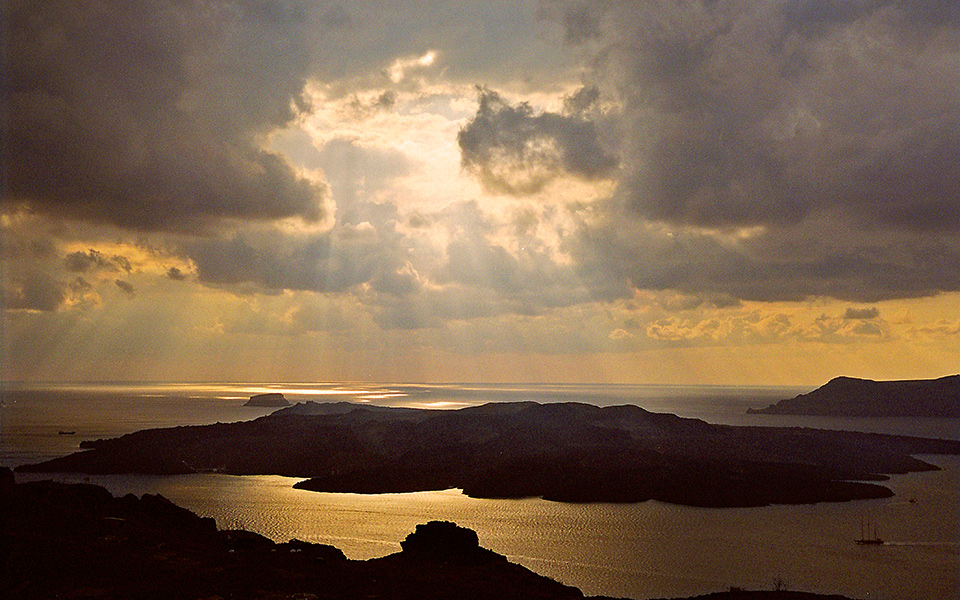Spring, 1613-1614 BC: The days were growing warmer and the cosmopolitan port of prehistoric Akrotiri should – under normal circumstances – have been buzzing with life. Potters should have been hard at work on clay jars, fishermen returning from sea with full nets and merchants loading their ships with amphorae of wine from the island’s rich vineyards. Yet the streets were deserted. The earth shook non-stop. Stairs were cut in two and walls bent out of shape. The residents had fled the city, helter-skelter.
Where they went, nobody knows. To this day, not a shred of evidence of life has been dug up. It is possible they managed to leave the island; but it is also likely that they gathered in open spaces or near the port in the hopes of getting away, as was the case with the residents of Pompeii when Vesuvius erupted in 79 BC.
Did they know what was happening? Excavations have revealed that prehistoric Akrotiri was a sophisticated society with an advanced civil protection mechanism to respond to earthquakes and possibly volcanic eruptions. What the residents probably did not know when they abandoned the city was that the colossal explosion that was building up would be unlike anything ever recorded in the history of mankind before.
“ The Minoan eruption was the largest volcanic event on Earth in the last 10,000 years. Santorini and nearby islands within a radius of 60 km were completely destroyed. ”
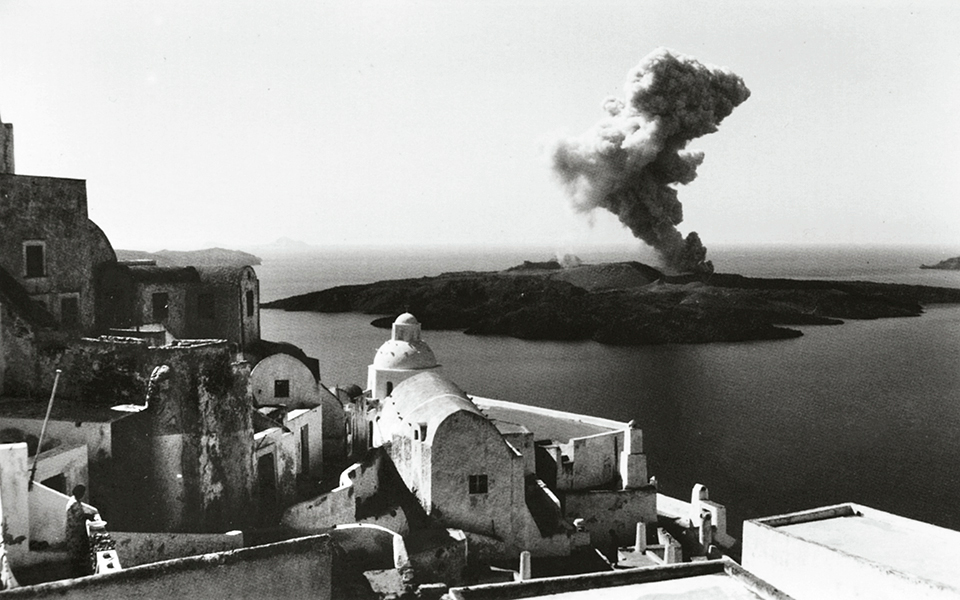
It is estimated that in just six days, more than 90 billion tons of molten rock was ejected into the air. The volcano was swallowed by the sea, forming the caldera we see today and creating a massive tsunami that swept across the Aegean to slam the northern and eastern coast of Crete. It is believed that the wave destroyed the Minoans’ commercial fleet and vast tracts of crops on Crete’s northern coast. The acid rain that fell on the island over the next few years decimated its flora and fauna.
The volcanic ash, after covering the entire island in a 10-meter-thick blanket, traveled across the world. Ash and droplets of sulfuric acid from the eruption are still being found by scientists today, even as far away as the glaciers of Greenland. The effect on the climate was felt across the globe. According to experts, the eruption caused a volcanic winter, plunging the world’s average temperature by 1-2 degrees Celsius.
The devastation of Santorini was total. Signs of habitation did not reappear until after the 8th century BC, while the islands within a radius of 60 kilometres suffered a similar fate. Other than the unfathomable destruction of nature, the volcano may also have triggered the demise of the most advanced civilization of the time, the Minoans. The effects of the massive eruption challenged a socio-political establishment that already appeared to be under pressure. Why, for example, had the priests been unable to prophesize the catastrophe? The crisis created turmoil, transformed Minoan society and led to a decline that was followed by a period of spiritual retrenchment.
“ The threat of another explosion similar to that of the Minoan era is real, but essentially remote if one considers that such events occur only once every 15,000-20,000 years. ”
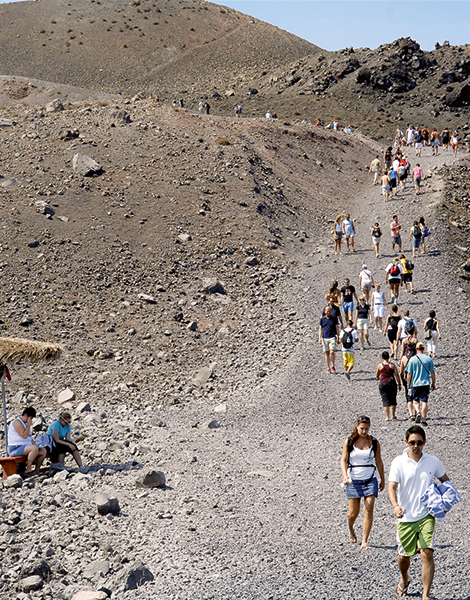
© Corbis/Smart Magna
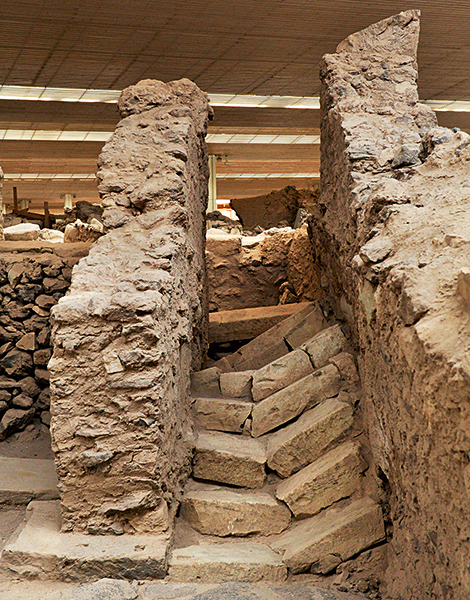
© Vangelis Zavos
Fortune hunters pursued the legend of lost Atlantis, described by the Greek philosopher Plato, while the biblical story of Moses and the Exodus from Egypt, as well as the seven plagues described in the Old Testament, all became associated with the eruption.
In the last 400,000 years, the volcano has erupted and been reborn from its ashes 12 times, causing dramatic changes to the archipelago’s morphology. Some 25,000 years ago, Santorini was twice the size it is today but 4,000 years later, the eruption of a volcano at Cape Riva sank a large part of the island and formed a caldera, near the present one. Around 17,000 years after that eruption, in 1613 BC, the last big explosion on Strongyle broke it into three parts: Thera, Thirasia and Aspronisi. Another 1,500-odd years passed before new land started to rise from the caldera. Eight more eruptions followed before the islets of Palia and Nea Kameni settled into their present form.
“ Santorini’s volcano is the most active in Greece and one of the most powerful caldera volcanos in the world. During the past 400,000 years, it has produced 12 explosive eruptions. ”
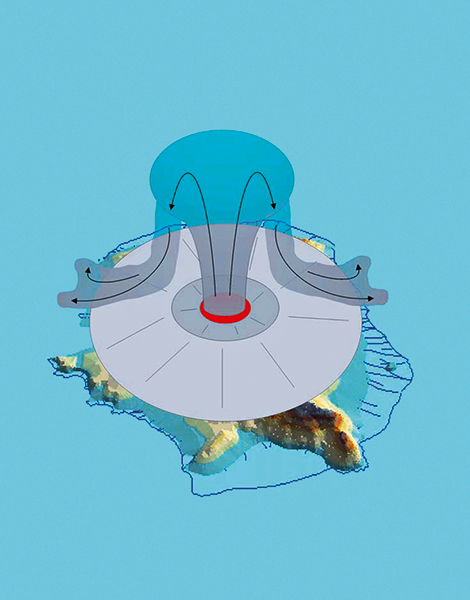
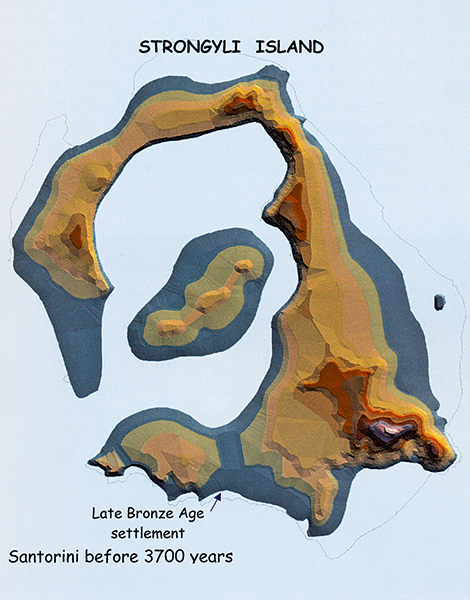
The area has been calm since 1950, when the last lava outflow was recorded, with the hot springs bubbling up from the sea and the vapors around Nea Kameni being the only evidence of activity. Another explosion such as that of the Minoan era, which would not only wipe out Santorini but also reshape the entire Aegean and Eastern Mediterranean, cannot be ruled out. But the threat is remote if one considers that such events occur only once every 15,000-20,000 years and it has been just 3,600 years since the last big eruption.
Nothing can stop the volcano but we have managed to control its effect on human life. Volcanologists and other experts from around the world systematically study, record and observe seismic activity in the area, the level of the coastline, changes in temperature and the content of the vapors and hot springs, as part of a reliable monitoring system that allows them to predict when the next volcanic eruption will occur within a window of a few months to a year. Thanks to an increasing body of knowledge and the vigilance of scientists, we can rest easy and simply enjoy the legend of Atlantis, the secrets of the unique geological story that is the caldera’s formation and the dramatic beauty of Santorini’s colorful rocks.

